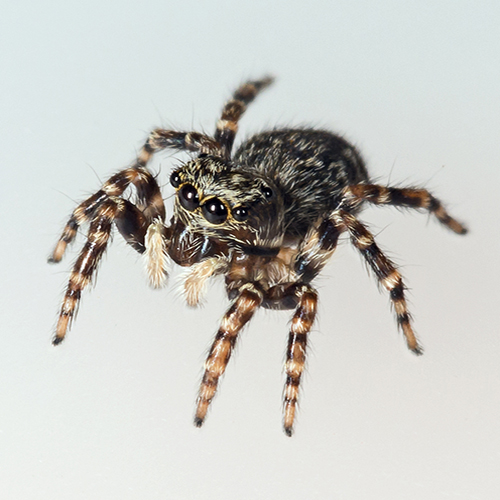Myth: Spiders do not literally eat the insects they kill; they only suck the "juices" or blood.
Fact: You can find this myth in many books; even some scientists, who have never bothered to look for themselves, believe it. There is not a particle of truth in this idea! Spiders are not miniature vampires; all species, as far as we know, digest some solid parts of their prey. What makes it especially interesting is that the digestion process begins outside the spider, where anyone who wants to look can see how it works.
Put a medium-sized insect in the web of a large orbweaving spider in the garden. You will see the spider bite the prey, wrap it in silk, wait for it to die, then begin to eat. As a first step in eating, the spider will literally vomit digestive fluid over the prey. Then the prey is chewed with the "jaws" (chelicerae), and the fluid is sucked back into the mouth together with some liquefied "meat" from the prey. The spider repeats this process as often as necessary to digest, and ingest, all but the inedible hard parts. What is discarded afterwards is a small ball of residue.
Spiders other than orbweavers may eat the prey's body but discard some of the wings, legs, etc. Spiders with very small (if strong) jaws (such as crab spiders and cobweb weavers) make small holes in the prey and vomit their digestive fluid into the prey's body, the end result being a hollow shell with some or most of the muscles and internal organs digested and sucked out.




